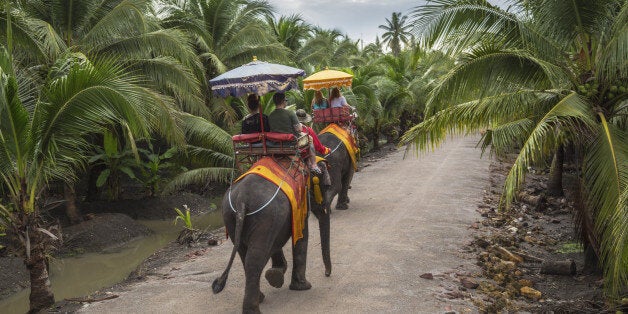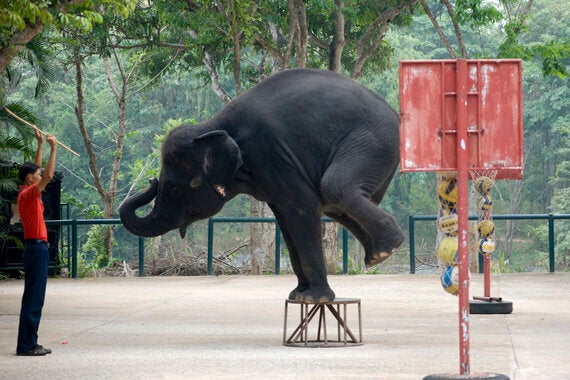

Last Saturday people all over the world celebrated World Animal Day, a time for remembering and paying tribute to animals, the vital role that they play in our day to day lives, and the people who care and respect for them.
World Animal Protection chose this as the ideal day to launch its new long term campaign about Wildlife in entertainment. The sad reality is that people's passion for wild animals causes untold hidden suffering to the animals involved every single day, all over the world.
More often than not, tourists are entirely unaware of the cruelty that goes on behind the scenes. So to help you to be a responsible, wild animal friendly tourist, here is a list of some of the cruellest types of attractions, to be avoided at all costs:
1. Riding Elephants
Elephant calves are taken from their mothers at an early age and both physical and psychological pain is typically used to 'break their spirit'. Elephants have been known to develop post-traumatic stress disorders, similar to the condition seen in humans as a result.
2. Walking with Lions
Attractions offering the opportunity to 'walk with lions' require a continual stream of cubs in order to operate. When they are too large to 'safely' walk with tourists their future is placed in jeopardy as they are too 'tame' to be effectively released back to the wild.
3. Taking Tiger 'Selfies'
Captive tigers used as 'photographic props' are typically kept on leads and punished in order to train and control them. Many will endure stressful procedures such as having their claws and canines removed in order to prevent them from mauling unsuspecting tourists.
4. Performing Dolphins
Wild dolphins are often chased by high-speed boats before being hauled onboard or caught in nets. For many, the associated stress is too much for them to take and they will never reach their intended destination. Those that do, face a lifetime of suffering in captivity.
5. Dancing Monkeys
When young macaques are not being trained or being used in street performances they are often kept chained in small barren cages or outside on short chains. As the macaque grows the chain can become embedded into the skin leading to painful infections and disease.
6. Snake Charming
Cobras are venomous, possessing bites that could prove fatal to humans. Upon capture, they are typically defanged with use of metal pliers before their venom ducts are either blocked or removed with un-sanitised equipment which can often result in painful infections.
7. Holding Sea Turtles
The stress caused by handling a sea turtle can weaken its immune system, increasing its susceptibility to disease. Intensive flapping of their flippers can also detach claws and cause fractures. Should a tourist drop a struggling sea turtle this can also cause significant injury.
8. Caged Civet Coffee
Wild civets are taken to produce civet coffee for visiting tourists. They are typically kept in small barren cages that do not meet their basic welfare needs. Poor conditions and nutrition, from a restrictive diet of coffee cherries, result in injuries and disease.
Ultimately, wild animals belong in the wild. They should not be trained to perform, used as photographic props or be forced to be ridden and handled by tourists. You should only visit responsible wildlife attractions, such as sanctuaries, that don't offer these types of activities.
This industry only survives because it is supplying a demand. That's why World Animal Protection is trying to reach people before they book, to show them the truth, make them think twice and choose a holiday that does not involve cruelty to animals.
I hope you'll join this call to action - find out more about what World Animal Protection is doing to end the unnecessary suffering of wild animals in tourism and how you can become a wild animal friendly traveller here.